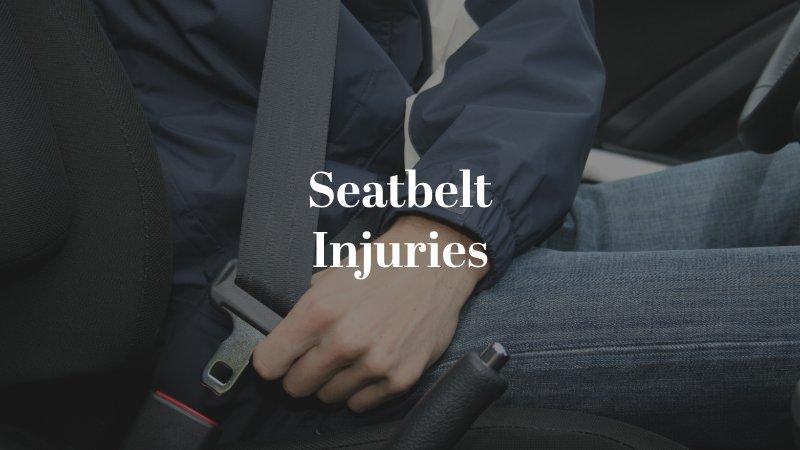Seatbelts save thousands of lives every year— an estimated nearly 15,000 lives in a single recent year alone. A properly functioning seatbelt prevents motorists from becoming projectiles or from forceful ejection from the vehicle during a crash.
Although seatbelts inarguably prevent fatalities, the crash force of an accident propels the vehicle occupants forward against the belt and then snaps them back against the seat cushions, causing significant bodily trauma and specific types of injuries.
Our skilled car accident lawyers in Denver can help you navigate a legal claim for your injuries.

How Powerful Is Crash Force In a Car Accident?
When a collision occurs in a car crash, the motorists’ bodies continue to move forward at the speed the car was traveling before the crash. The forward momentum is abruptly halted by the seatbelt, protecting the motorist from colliding with the internal structures of the car or from crashing through the windshield.
Experts warn that three collisions occur during a car accident, the collision of the vehicle, the vehicle occupant’s collision against the seatbelt, and the collision of organs inside the body.
To understand the power of crash force in a collision, consider the results of the crash force formula shared by the Montana Department of Transportation. According to calculations, a 150-pound person becomes a 6,750-pound force at only 45 miles per hour. When this force propels the body against the seatbelt and locks it into place, it can cause serious injuries, even at the same time it prevents death.
Symptoms of Seatbelt Injuries After a Car Accident
Many car accident victims later discover bruises and abrasions shaped like their seatbelts—clear evidence that the force of the motorist’s body against the seatbelt caused the injury. Sometimes the injuries go far below the surface, bruising and present symptoms in the hours and days after the accidents.
Symptoms of seatbelt injuries include swelling, bruising, tingling of the extremities, difficulty breathing, painful breathing, coughing up blood, or blood in the urine or stool.
When a car accident victim suffers from a range of seatbelt injuries, medical professionals may diagnose them with “Seatbelt Syndrome.”
What Types of Injuries Do Seatbelts Cause in Accidents?
Even when seatbelts save lives in car accidents, the force of impact can still cause serious injuries where the belt restrains the body.
Common seatbelt injuries include the following:
- Broken clavicles (collarbones)
- Shoulder injuries
- Whiplash and other neck injuries
- Broken ribs and other fractures
- Lumbar back injury
- Thoracic injuries
- Injury to the intestines
- Spinal cord injuries
- Hip injuries
- Pelvic injuries
- Bruises and swelling
- Abrasions of the neck, side, and hips
An injury victim can recover compensation from the negligent driver for all car accident injuries, including those caused by their seatbelt. A Denver injury lawyer from Dulin McQuinn Young can help you with a claim.
Who Is Liable for Seatbelt Injuries After a Car Accident?
When an accident results from another driver’s mistake, carelessness behind the wheel, or reckless driving, the at-fault party is liable for the victim’s damages, like medical expenses, lost wages, and compensation for pain and suffering. Even when the injuries were caused by the seatbelt, the negligent driver who caused the collision is liable for damages, typically paid through their auto liability insurance.
However, if an investigation shows that a design flaw or manufacturing error in the seatbelt contributed to the severity of the injuries, the manufacturer of the vehicle or seatbelt could share liability for injuries. In some cases, a car accident victim could recover further compensation through a defective product claim against the manufacturer.
How Can a Car Accident Attorney in Colorado Help?
A skilled car accident lawyer from our firm can thoroughly investigate all aspects of a car accident and the victim’s injuries to pursue all means of recovering compensation.
Call the experienced Colorado accident attorneys at Dulin McQuinn Young, the car accident law firm with a results-oriented approach that gets results for injured clients. When you call or message us online, we will schedule your free consultation.